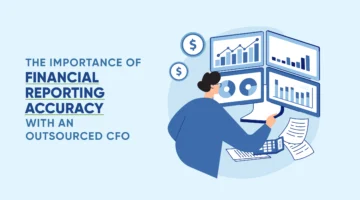Mastering Cash Flow Projections for Your Business
Cash flow is the lifeblood of any business. Understanding your cash flow is essential for maintaining financial stability, making informed decisions, and planning for the future. One powerful tool for achieving this understanding is cash flow projections.
What Are Cash Flow Projections?
Cash flow projections, also known as cash flow forecasts, are financial tools that estimate the future inflows and outflows of cash within a business over a specific period. They allow business owners and financial managers to anticipate how much cash will be available at any given time, which is crucial for managing day-to-day operations, repaying debts, and investing in growth.
Why Are Cash Flow Projections Important?
Cash flow projections serve several critical purposes for businesses:
1. Financial Planning
Cash flow projections help you plan for the future by providing insights into whether you will have enough cash to meet your financial obligations, cover expenses, and invest in opportunities.
2. Risk Management
You can proactively address financial challenges by anticipating potential cash shortfalls or surpluses, such as securing additional funding or adjusting expenses.
3. Decision-Making
With accurate cash flow projections, you can make informed decisions regarding capital investments, hiring, and strategic initiatives, minimizing the risk of financial instability.
4. Debt Management
Managing debt repayments is easier when you can anticipate your cash flow, ensuring you meet your obligations and avoid penalties.
5. Investor Relations
Cash flow projections are valuable for attracting investors and demonstrating your business’s financial health and growth potential.
How to Create Cash Flow Projections
Creating accurate cash flow projections involves a systematic approach. Here’s a step-by-step guide to help you get started:
1. Gather Historical Data
Begin by collecting historical financial data, including income statements, balance sheets, and cash flow statements. This data will serve as a foundation for your projections.
2. Identify Sources of Cash Inflows
List all sources of cash inflows, including sales, loans, investments, and any other revenue streams. Estimate the timing and amounts of these inflows for the projection period.
3. Identify Cash Outflows
Next, identify all sources of cash outflows, such as operating expenses, loan payments, salaries, and inventory purchases. Estimate the timing and amounts of these outflows.
4. Determine the Projection Period
Decide on the time frame for your cash flow projections. It can be a monthly, quarterly, or annual projection, depending on your business’s needs and goals.
5. Create a Cash Flow Statement
Construct a cash flow statement that begins with your opening cash balance for the period. Then, add cash inflows and subtract cash outflows to calculate the closing cash balance for each period.
6. Be Conservative with Estimates
When making projections, it’s generally wise to be conservative with your estimates. Underestimate your cash inflows and overestimate your cash outflows to prepare for unexpected variations.
7. Consider Multiple Scenarios
Business conditions can change rapidly. Consider creating multiple cash flow scenarios, including best-case, worst-case, and most likely scenarios, to account for different outcomes.
8. Monitor and Update Regularly
Cash flow projections are not static. Regularly update your projections as new data becomes available and as your business evolves. This will help you stay on top of your financial situation.
9. Use Financial Software
Consider using financial software or cash flow projection tools to streamline the process and ensure accuracy. Many software solutions can automate data input and perform calculations for you.
10. Seek Professional Guidance
If you’re unsure about any aspect of cash flow projections, consider seeking advice from NOW CFO consultants. We can provide valuable insights and ensure your projections are accurate.
Remember: regular monitoring and adaptation are essential to keeping your cash flow projections relevant and effective in an ever-changing business landscape.



